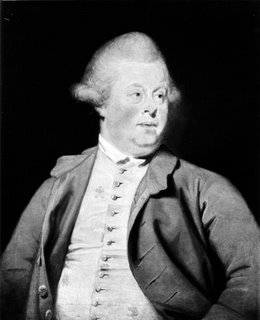 This posting is part of a series on F W Boreham and the authors who influenced his literary style. This article is the third instalment on the historian, Edward Gibbon (1737-1794):[1]
This posting is part of a series on F W Boreham and the authors who influenced his literary style. This article is the third instalment on the historian, Edward Gibbon (1737-1794):[1]Predictable Structure
While Boreham became adept at using colorful images, his editorial framework, like Gibbon’s structures, was often predictable and monotonous.[2] The first editorial Boreham wrote in which he compared the British Empire with the Roman Empire is an indication not only of the way Boreham drew on Gibbon for content but also of the way he came to be formed by Gibbon in “the use of parallel situations, literary and historical”,[3] a stylistic device that is common in many of Boreham’s writings.
Human-Centred History
Boreham applauded the human-centredness of the Decline and fall and its author who half-jokingly described history “as nothing but a record of the crimes and follies of mankind.”[4] Many of Boreham’s biographical editorials betrayed hints of Gibbon’s style of characterisation, especially in his use of balance between “a character’s virtues and vices, his strengths and his weaknesses, his magnanimous actions with his petty concerns”.[5]
Clarity of Expression
For Boreham, part of “the glory of Gibbon”[6]was derived from the historian’s measured prose and his economy of words and lucid diction, which meant that “no sentence needs to be read twice in order to be understood”.[7] As Gibbon was committed “to eliminate vagueness from his writing” so Boreham often expressed concern about the ‘leakage’ of an author’s meaning in even the clearest expression:[8]
The most brilliant writer cannot so arrange his phraseology as to make it a perfect vehicle for his thought. Something is lost in communicating his meaning to his manuscript. And even the best of readers sometimes nods. All that the author thought is not written: and all that is written is not read: so that at both stages, leakages appear.[9]
Boreham’s lament led him to admire authors who demonstrated clarity in expression and it bolstered his resolve to polish his writing to achieve for his readers the clearest communication of meaning.
Summary of Gibbon's Marks on Boreham
The formative influences of Gibbon on Boreham were significant. The historian whose massive work was the result of self-education was to be a major inspiration to the young writer in his own reading programme. The initial “wild excitement of his magnificent adventure with Gibbon” continued with Boreham throughout his life and found expression in the many essays and editorials that extolled the value of history and the importance of venerating one’s heroes.[10]
From Gibbon, Boreham developed an eye for detail yet he painted with a ‘broad brush’ that yielded a colourful and vivid historical drama. However, Boreham was too often simplistic, general and deficient in analysing the philosophical issues.
Consciously or unconsciously, Boreham came to acquire many stylistic features that characterised Gibbon’s writings, especially to do with structure and techniques, to help readers to visualise events and to experience good aural effects. Edward Gibbon wrote with concreteness, precision and lucidity—important elements that Boreham believed contributed to all good writing and qualities that he aimed to express in his own writing.
Geoff Pound
Image: Edward Gibbon
[1] Gibbon was born in England and, while he served as a member of parliament, is best remembered for his historical writings. Further biographical details may be found in the Bloomsbury guide to English literature, 391-392.
[2] de Beer, ‘A reading of Gibbon’, 366.
[3] Bond, The literary art of Edward Gibbon, 76.
[4] Bond, The literary art of Edward Gibbon, 89.
[5] Bond, The literary art of Edward Gibbon, 105.
[6] Boreham, The ivory spires, 30.
[7] de Beer, ‘A reading of Gibbon’, 366-367.
[8] Bond, The literary art of Edward Gibbon, 78.
[9] Boreham, Mercury, 6 December 1941; Age, 18 January 1947.
[10] Boreham, The ivory spires, 30.


